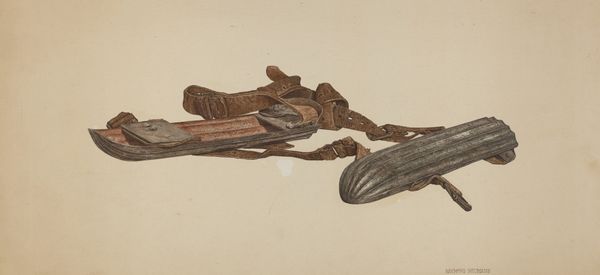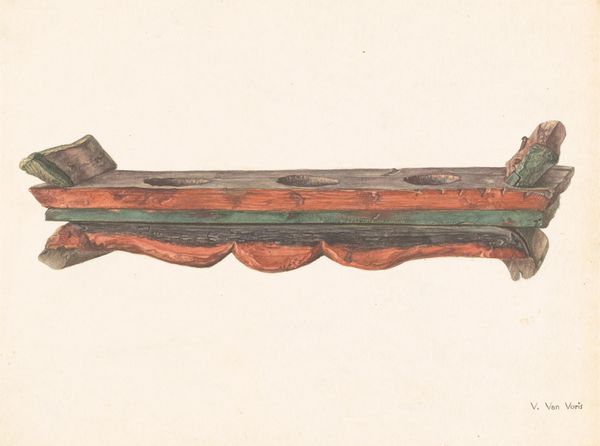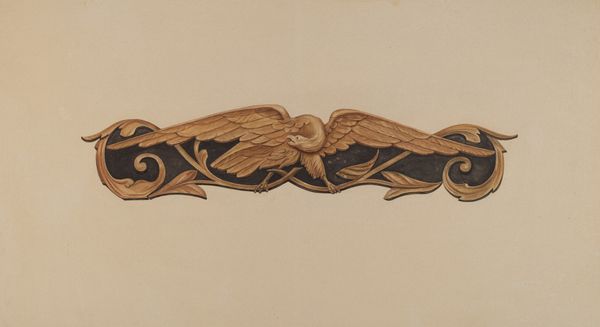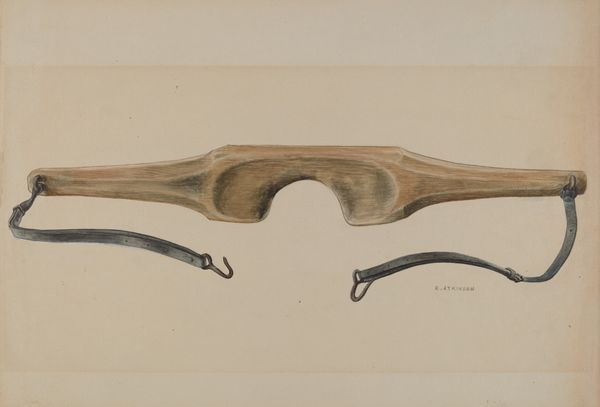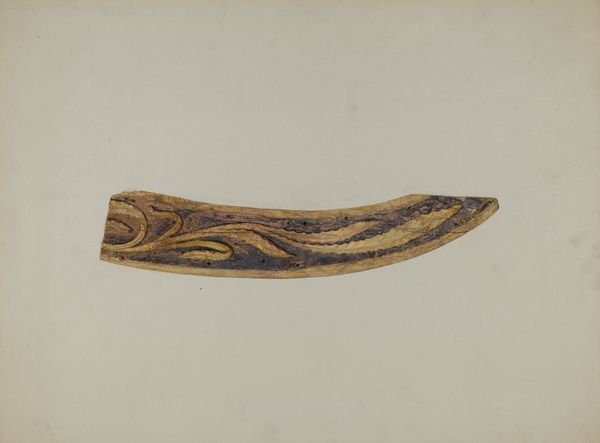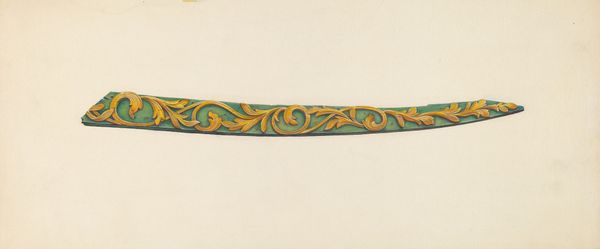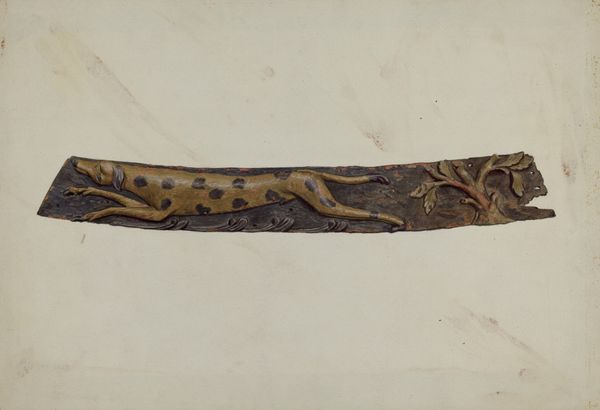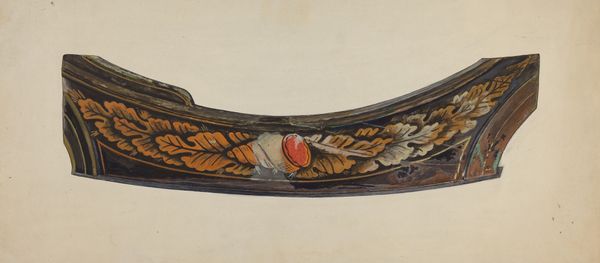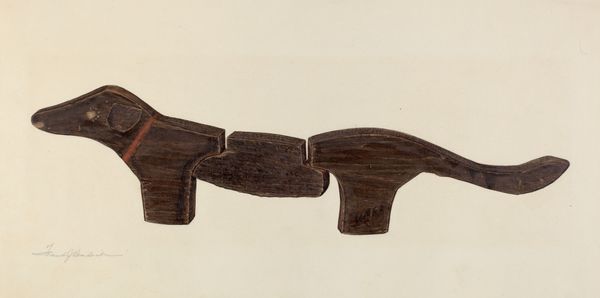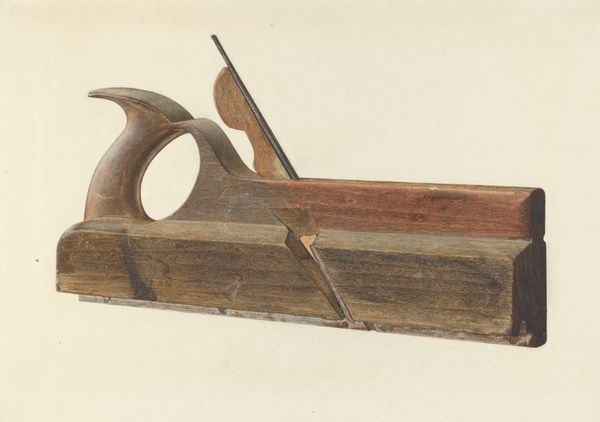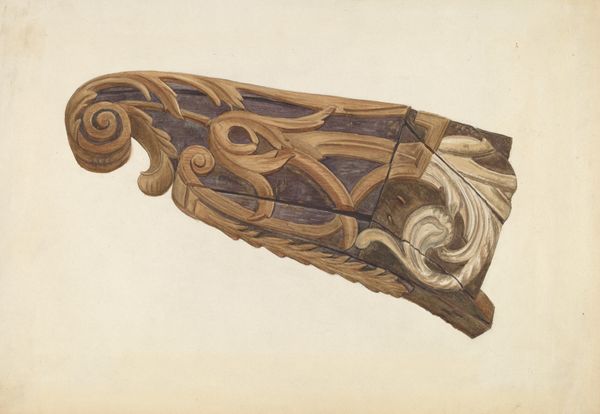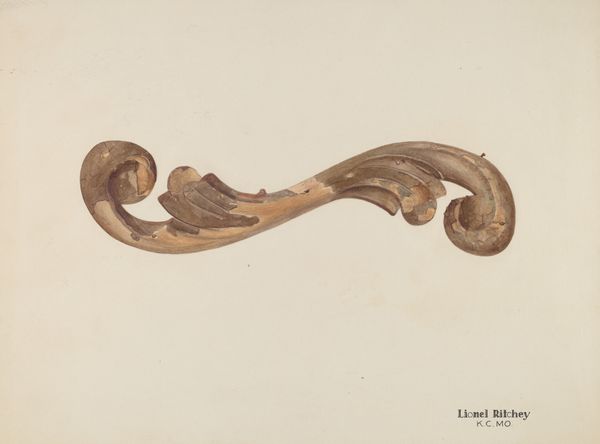
Dimensions: overall: 16.5 x 28.9 cm (6 1/2 x 11 3/8 in.) Original IAD Object: 2" wide; 8" long
Copyright: National Gallery of Art: CC0 1.0
Editor: We’re looking at Harry Jennings' "Tie-back," a coloured-pencil drawing from around 1938. It features a curving, ornate form. It feels very stylized. What do you see in this piece? Curator: I see the echoes of the Arts and Crafts movement, with its emphasis on handcrafted beauty and a certain idealized vision of labour and design. But within that context, it is important to unpack the loaded term of "handcrafted beauty", particularly as it stood in direct opposition to the dehumanizing impact of industrial capitalism. This work invites a critique of the elitism often embedded within that movement. Do you notice how the sinuous lines, though organic, are also rigidly controlled? Editor: Yes, it’s like a natural form captured and then constrained. Almost pressed. Curator: Exactly. That tension mirrors the societal constraints placed on artistic expression at the time, particularly for working-class artists. It invites a conversation around how the artist negotiated those constraints while still participating in, and being partially supported by, a bourgeois economy, including selling items in department stores. It embodies a quiet resistance, perhaps a subtle commentary on the limitations imposed on creativity and access to the creation and consumption of art objects by economic structure. It prompts us to consider: Who had the leisure to create, and who benefited from this art? Editor: That's fascinating, I never considered the socioeconomic aspect. So it’s beautiful, but with a conflicted story. Curator: Precisely. The object becomes a site for questioning power structures and the historical forces that shaped both art and society. Hopefully we are prompting the visitor to reflect more broadly about the consumption and production of artwork in modern life. Editor: I’m walking away thinking differently about the drawing. I had expected craftsmanship, and now I'm seeing its inherent conflicts and how societal context shapes artistic production.
Comments
No comments
Be the first to comment and join the conversation on the ultimate creative platform.
